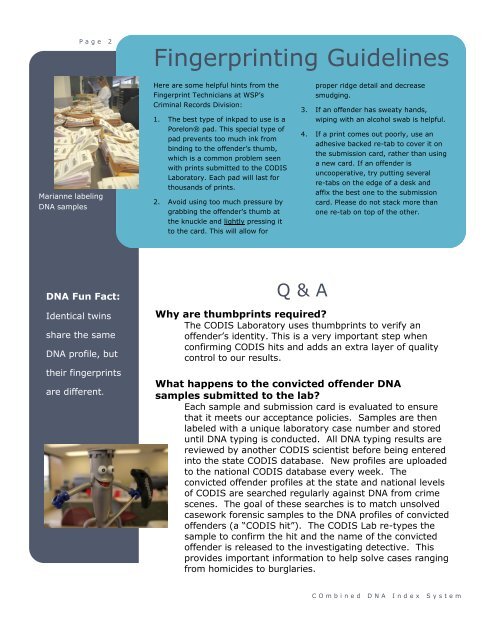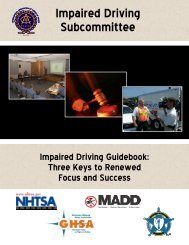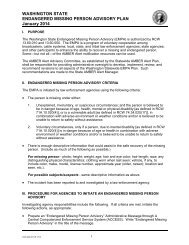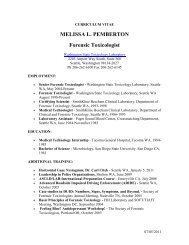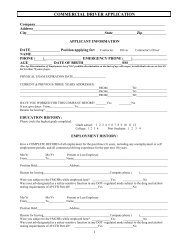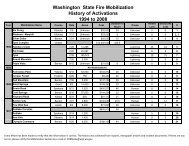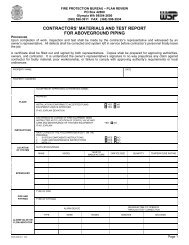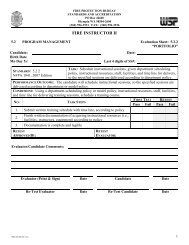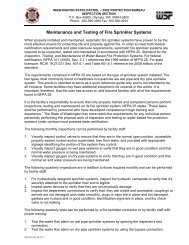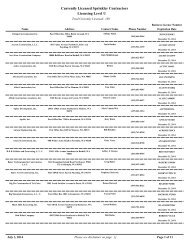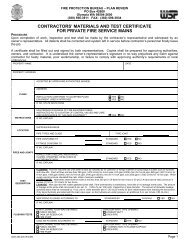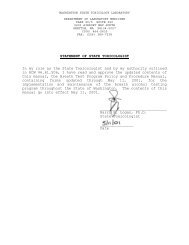CODIS Newsletter Oct 2010 - Washington State Patrol
CODIS Newsletter Oct 2010 - Washington State Patrol
CODIS Newsletter Oct 2010 - Washington State Patrol
Create successful ePaper yourself
Turn your PDF publications into a flip-book with our unique Google optimized e-Paper software.
P a g e 2Fingerprinting GuidelinesMarianne labelingDNA samplesHere are some helpful hints from theFingerprint Technicians at WSP’sCriminal Records Division:1. The best type of inkpad to use is aPorelon® pad. This special type ofpad prevents too much ink frombinding to the offender’s thumb,which is a common problem seenwith prints submitted to the <strong>CODIS</strong>Laboratory. Each pad will last forthousands of prints.2. Avoid using too much pressure bygrabbing the offender’s thumb atthe knuckle and lightly pressing itto the card. This will allow forproper ridge detail and decreasesmudging.3. If an offender has sweaty hands,wiping with an alcohol swab is helpful.4. If a print comes out poorly, use anadhesive backed re-tab to cover it onthe submission card, rather than usinga new card. If an offender isuncooperative, try putting severalre-tabs on the edge of a desk andaffix the best one to the submissioncard. Please do not stack more thanone re-tab on top of the other.DNA Fun Fact:Identical twinsshare the sameDNA profile, buttheir fingerprintsare different.Q & AWhy are thumbprints required?The <strong>CODIS</strong> Laboratory uses thumbprints to verify anoffender’s identity. This is a very important step whenconfirming <strong>CODIS</strong> hits and adds an extra layer of qualitycontrol to our results.What happens to the convicted offender DNAsamples submitted to the lab?Each sample and submission card is evaluated to ensurethat it meets our acceptance policies. Samples are thenlabeled with a unique laboratory case number and storeduntil DNA typing is conducted. All DNA typing results arereviewed by another <strong>CODIS</strong> scientist before being enteredinto the state <strong>CODIS</strong> database. New profiles are uploadedto the national <strong>CODIS</strong> database every week. Theconvicted offender profiles at the state and national levelsof <strong>CODIS</strong> are searched regularly against DNA from crimescenes. The goal of these searches is to match unsolvedcasework forensic samples to the DNA profiles of convictedoffenders (a “<strong>CODIS</strong> hit”). The <strong>CODIS</strong> Lab re-types thesample to confirm the hit and the name of the convictedoffender is released to the investigating detective. Thisprovides important information to help solve cases rangingfrom homicides to burglaries.C O m b i n e d D N A I n d e x S y s t e m


